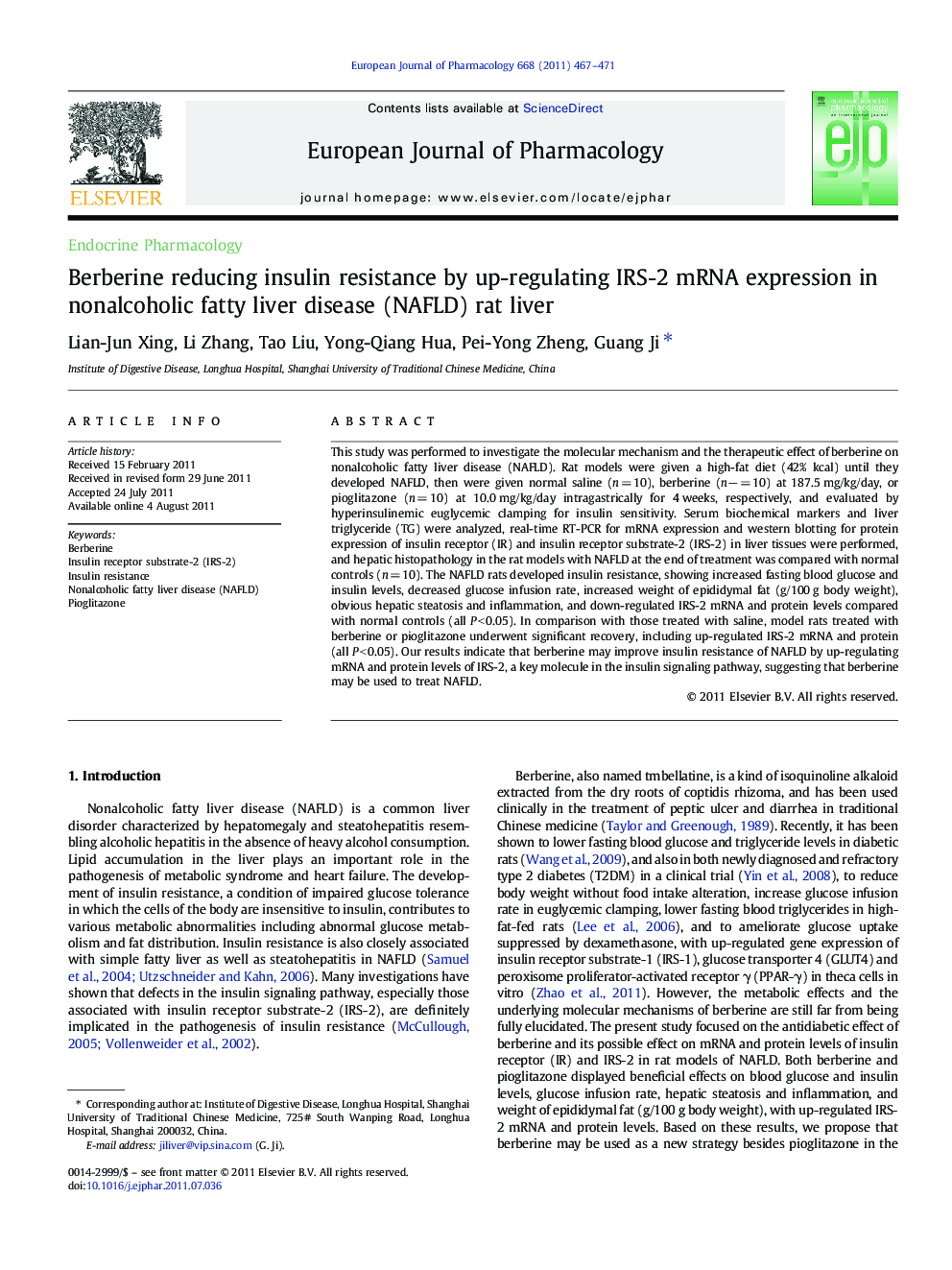| Article ID | Journal | Published Year | Pages | File Type |
|---|---|---|---|---|
| 2532502 | European Journal of Pharmacology | 2011 | 5 Pages |
This study was performed to investigate the molecular mechanism and the therapeutic effect of berberine on nonalcoholic fatty liver disease (NAFLD). Rat models were given a high-fat diet (42% kcal) until they developed NAFLD, then were given normal saline (n = 10), berberine (n− = 10) at 187.5 mg/kg/day, or pioglitazone (n = 10) at 10.0 mg/kg/day intragastrically for 4 weeks, respectively, and evaluated by hyperinsulinemic euglycemic clamping for insulin sensitivity. Serum biochemical markers and liver triglyceride (TG) were analyzed, real-time RT-PCR for mRNA expression and western blotting for protein expression of insulin receptor (IR) and insulin receptor substrate-2 (IRS-2) in liver tissues were performed, and hepatic histopathology in the rat models with NAFLD at the end of treatment was compared with normal controls (n = 10). The NAFLD rats developed insulin resistance, showing increased fasting blood glucose and insulin levels, decreased glucose infusion rate, increased weight of epididymal fat (g/100 g body weight), obvious hepatic steatosis and inflammation, and down-regulated IRS-2 mRNA and protein levels compared with normal controls (all P < 0.05). In comparison with those treated with saline, model rats treated with berberine or pioglitazone underwent significant recovery, including up-regulated IRS-2 mRNA and protein (all P < 0.05). Our results indicate that berberine may improve insulin resistance of NAFLD by up-regulating mRNA and protein levels of IRS-2, a key molecule in the insulin signaling pathway, suggesting that berberine may be used to treat NAFLD.
